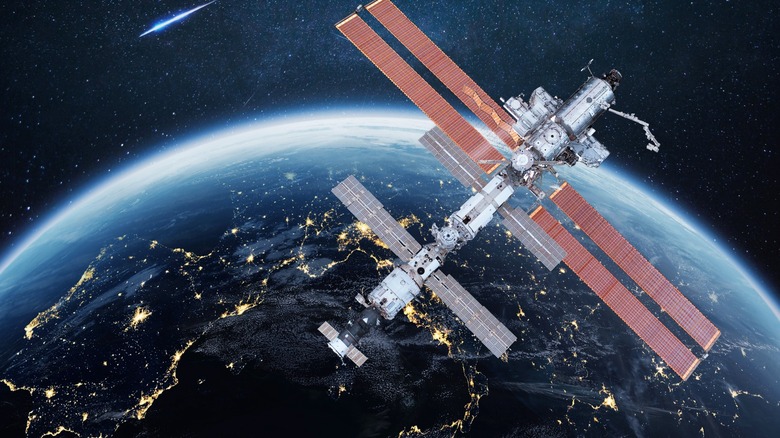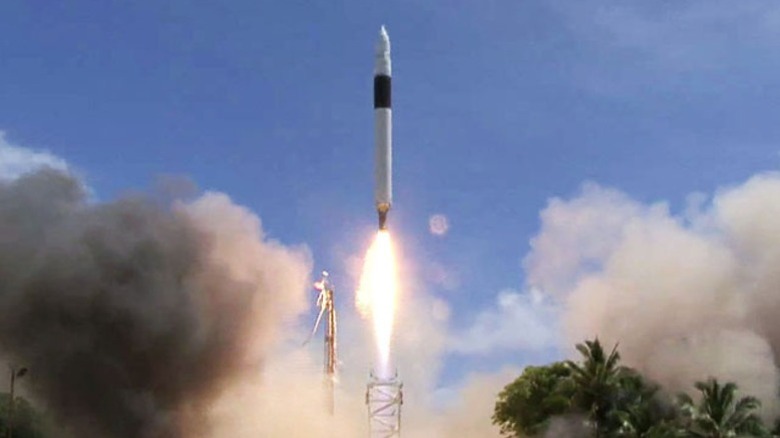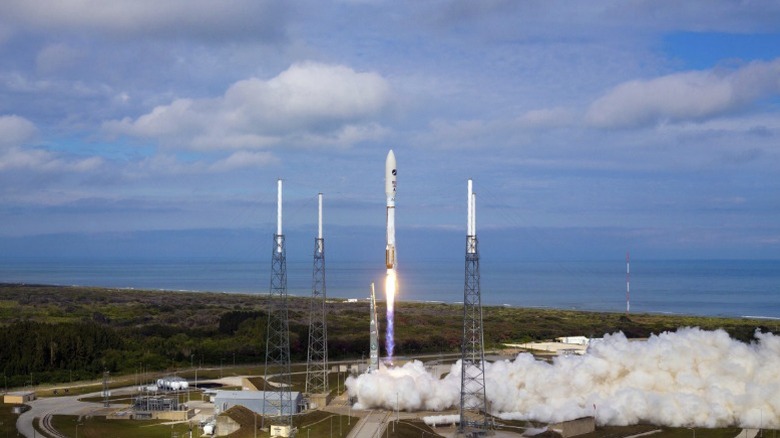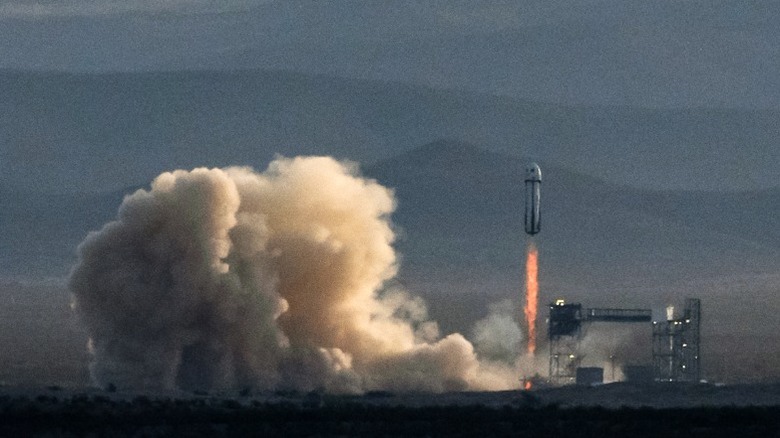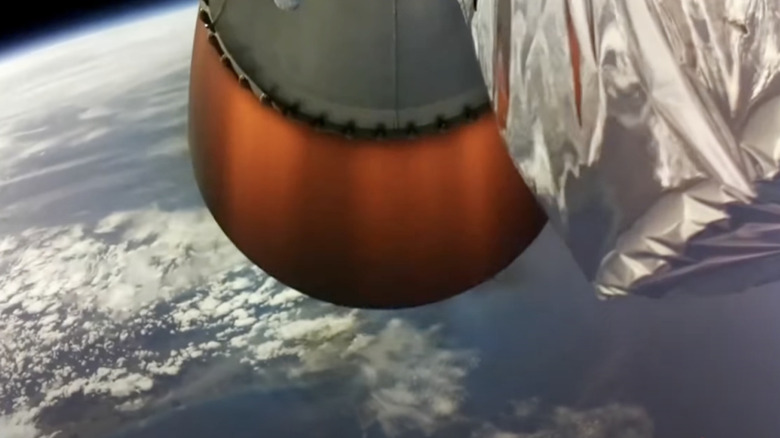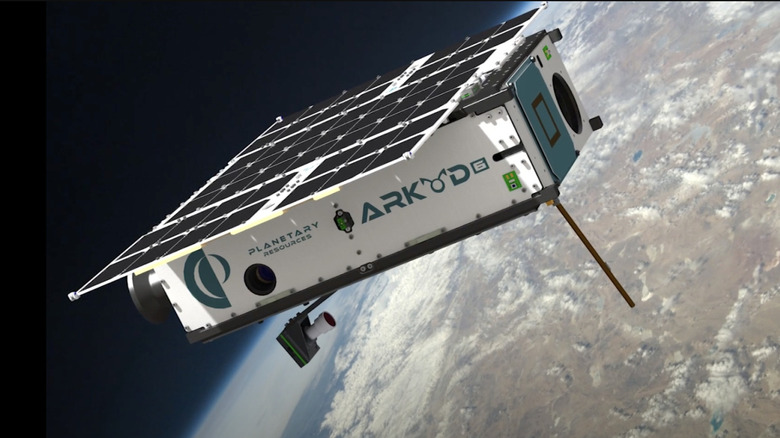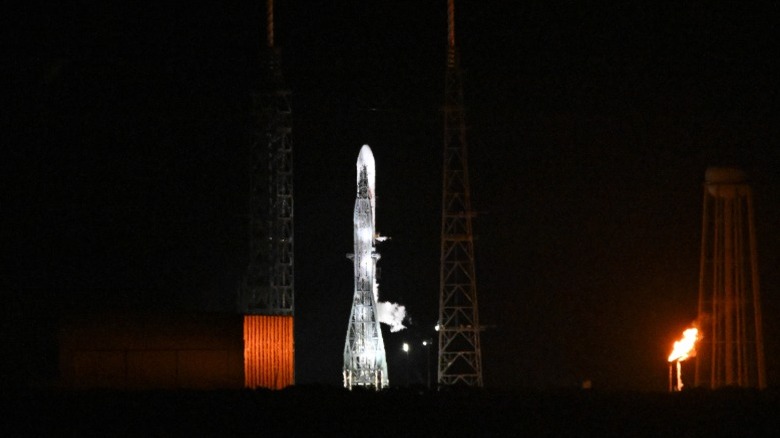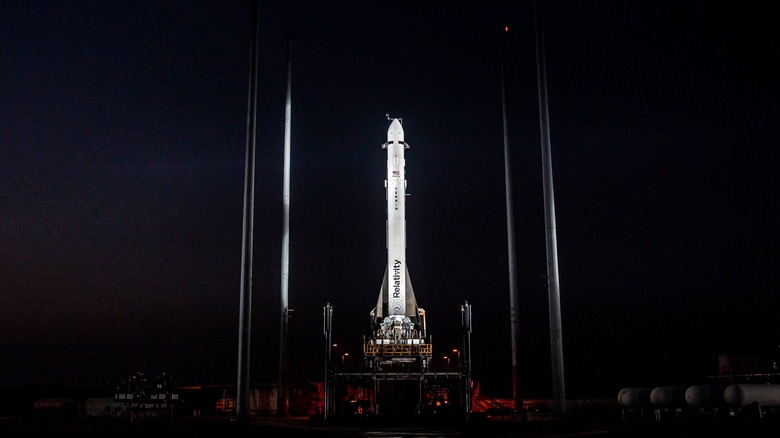7 Non-NASA US Space Missions You Might Not Know About
The United States is often synonymous with NASA when it comes to space exploration. This is unsurprising, as the agency has recorded several groundbreaking missions. Many of these missions not only form part of NASA's history but have also solidified themselves in American lore. From the Apollo 11 Moon Landing to the Mars Pathfinder and even the International Space Station, its legacy dominates the narrative. But America's missions into space extend beyond NASA and its illustrious activities.
There are several non-NASA missions that have made remarkable contributions to space science and exploration. Private companies, universities, and other government agencies alike have increased their stake in the space race. They execute missions in their own right, but these often lack the pomp and fanfare that NASA missions do. These lesser-known missions have expanded humanity's understanding of life and resources beyond Earth. They've also driven technological advancements, paving the way for a commercial space sector, including space tourism. With that in mind, here are seven non-NASA space missions you might not know about.
Ratsat: First private orbital launch (2008)
Prior to acquiring X and becoming a public office holder, Elon Musk was known for founding SpaceX. The company has become a bit of a household name in recent years, but this wasn't always the case. Established in 2002, the company set out to revolutionise the space industry. It wanted to show that private companies could compete in a field dominated by government agencies. After years of research and development, its agenda became clear: to become the first privately owned rocket to reach orbit. That's how the Falcon 1 was born, pivotal to one of the most important SpaceX missions.
The Falcon 1 was a two-stage orbital launch vehicle fueled by liquid oxygen and refined kerosene. It was about 21 meters long and had a payload capacity of around 1,200 pounds. Space Exploration Technologies Corp., as it was then known, did not let three earlier launch failures of the Falcon 1 deter it from its purpose. The first launch failed shortly after liftoff, barely lasting a minute. The second and third attempts failed due to ignition and separation issues, respectively.
Regardless, on September 28, 2008, the Falcon 1 finally recorded a successful launch. Known as the Ratsat mission, it launched from the Reagan Test Site on Omelek Island. The launch was broadcast through the company's live webcast and viewed by a global audience. Today, it holds a place in history as the first privately developed liquid-fuel rocket to reach Earth orbit. It also signified a new era of space exploration propelled by private funding rather than government agencies.
OTV-1: Inaugural military spaceplane mission (2010)
Protection and defence have long gone beyond the three domains of land, air, and sea. That's right, part of ensuring a safe and secure nation includes space exploration. The United States recognised this long ago. When it's not using NASA's facilities and resources, the government employs its own contractors to carry out certain space missions. This was the case in 2010 with the OTV-1 mission. Much of this mission's objective is shrouded in secrecy. In other words, it was launched as part of a classified mission. But we do know a few things.
One of these is that the secretive spaceplane spent a combined 10 years in orbit. We also know that it was operated by the U.S. Space Force — or the U.S. Air Force, as it was known back then. The spacecraft itself was an X-37B Test Vehicle, developed by Boeing exclusively for the Air Force. OTV-1 marked the maiden launch of this vehicle, taking place on April 22, 2010. It launched from Cape Canaveral Air Force Station in Florida and landed at Vandenberg Space Force Base in California. The spaceplane was reusable and part of efforts to develop cost-effective space operations. We might never know the mission's true objective. Still, it's significant in showing the military's ability to operate and complete missions in space.
New Shepard test flight: First vertical rocket landing by Blue Origin (2015)
Once SpaceX showed the possibilities of private space exploration, the space race was on. Blue Origin entered this race purposefully. Like SpaceX, the company was founded by an American billionaire mogul, none other than Jeff Bezos, who launched it in 2000. The company's objectives include reducing the cost of space travel and harnessing its vast resources. New Shepard is its flagship rocket, a reusable suborbital vehicle named after astronaut Alan Shepard, the first American in space. This was the rocket with which, on November 23, 2015, Blue Origin made history.
In theory, the mission was simple: Get the suborbital vehicle to launch successfully and, for the first time, return its reusable rocket to Earth intact. In practice, the mission was complex but accomplished. Blue Origin's New Shepard became the first to successfully land a reusable space rocket, beating SpaceX to the milestone. It was nothing short of a groundbreaking achievement in space exploration. Not only did it demonstrate vertical landing technology, it also reshaped the industry's approach to rocket reusability.
This historic launch took place at Blue Origin's West Texas facility. There, the rocket and crew capsule lifted off to an altitude of 62 miles, just enough to cross the internationally recognized boundary of space. The uncrewed capsule then separated from the rocket and continued its ascent. Shortly after, it deployed parachutes and landed safely. Meanwhile, the booster executed a controlled descent, reigniting its BE-3 engine at an altitude of just about 5,000 feet to slow its fall. It finally landed upright on the designated pad with pinpoint precision.
Still Testing: Rocket Lab's first orbital launch (2018)
Another space exploration company with a mission to make space travel cheaper is Rocket Lab. On January 21, 2018, the company carried out its Still Testing mission. Rocket Lab designed this mission to prove that small and cheap space launches are possible. The vessel used was the company's flagship Electron rocket. Electron is a two-stage launcher about 17 meters high. It's powered by innovative Rutherford engines, which are remarkable; they are the first electric-pump engines to power an orbital-class rocket. As if that weren't enough, they're also notable for being largely 3D-printed. The use of this engine is further proof of Rocket Lab's commitment to making manufacturing processes simpler, cheaper, and better.
The 2018 launch was the first time the Electron rocket successfully reached orbit. It lifted off from Rocket Lab's private Launch Complex 1 on the Māhia Peninsula in New Zealand. It was outfitted with multiple payloads, including three CubeSats: two Lemur-2 satellites that performed weather and ship tracking for Spire Global, and a Dove satellite for Planet Labs, used for Earth imaging. Additionally, the mission included the Humanity Star, a reflective sphere intended to bounce sunlight back to Earth.
The mission's success was significant. It showed Electron's ability to deliver small payloads to specific orbits, a key capability in meeting the growing demand for small satellite launches. Prior to this, small satellites often had to piggyback on larger missions, which was less than ideal for timing and deployment control. As such, the success of Still Testing elevated Rocket Lab to a key player in the small satellite launch industry. The company followed this up with its first successful commercial launch just a few months later.
Arkyd-6: Asteroid mining tech demo in orbit (2018)
Arkyd is such a cool name for an astronautics company. But apparently not cool enough, if you're Planetary Resources. This American company was established in 2009 as Arkyd Astronautics. Three years later, it rebranded to Planetary Resources. Its objective is in plain sight. As the name implies, the company's goal is to expand Earth's natural resources by searching for new ones — in space. It gained attention for its ambitious plans for asteroid mining. Yes, you read that right. Planetary Resources has taken the hunt for natural resources off the planet. And what better to mine than asteroids? With this goal in mind, the company developed the Arkyd-6 satellite and mission, which launched on January 12, 2018.
Planetary Resources launched the Arkyd-6 satellite using an Indian Polar Satellite Launch Vehicle from the Satish Dhawan Space Centre in India. The satellite is a 6U CubeSat, about the size of a cereal box, and was designed to test technology for potential asteroid mining missions. At the core of the mission was the mid-wave infrared (MWIR) imager, an instrument built to detect water and heat energy signatures. This would be key in locating water resources and identifying asteroid targets. The satellite also tested power generation, attitude control, and onboard computing systems.
Shortly after launch, mission control established communication with Arkyd-6, and the satellite began transmitting data. Its solar panels were operational, batteries were charging, and it demonstrated autonomous system functions. These were all sIgns of success. The MWIR imager even captured thermal images of Earth's surface, detecting infrastructure like refineries — proving its ability to spot heat signatures.
NS-15: Suborbital rehearsal for human spaceflight (2021)
Back to Blue Origin, this time with its NS-15 mission. One of the company's longstanding goals has been to make space tourism readily available at an affordable price. The NS-15 mission proved to be a key moment on this quest. Scheduled for launch on April 14, 2021, its purpose was to prepare for NS-16, a crewed mission. NS-15 took place at the company's West Texas launch facility and was an uncrewed suborbital flight. Blue Origin engineers designed it to test astronaut procedures and operations. This was an important rehearsal for future human spaceflights, the company's ultimate goal.
You might have heard of the NS-16 mission that followed it. That mission achieved human spaceflight with a few passengers, including founder Jeff Bezos. Much of NS-16's success is owed to the groundwork laid by NS-15. The NS-15 mission was truly unique, as it incorporated astronaut-related procedures for the first time. Before liftoff, Blue Origin personnel simulated boarding as if they were actual passengers.
Once these rehearsals were complete, the crew got off the craft, and the flight proceeded autonomously. The launch was smooth, with the capsule reaching heights of over 66 miles. The spacecraft's booster then landed back at the designated pad as planned, demonstrating the accuracy of the rocket landing technology introduced by the earlier NS-2 mission. Shortly after, the capsule that went into orbit returned safely to Earth.
GLHF: First 3D-printed rocket launch (2023)
When a launch fails to reach orbit but still manages to make history, you know it's worth paying attention to. The "Good Luck, Have Fun" (GLHF) mission certainly deserves it. Conducted by Relativity Space in 2023, this mission was anything but ordinary. Relativity Space, an aerospace manufacturing company founded in 2015, aims to "rewrite the rules of rocketry." And on March 22, 2023, it did just that by launching the world's first 3D-printed rocket. After calling off an earlier attempt on March 8, Relativity Space pulled it off with its Terran 1 rocket.
The Terran 1 rocket stands 110 feet tall and was powered by nine Aeon 1 engines in its first stage. It successfully lifted off at 8:25 p.m. EDT from Launch Complex 16 at Cape Canaveral Space Force Station in Florida. The rocket initially performed well, achieving stage separation — a major milestone. Unfortunately, an engine issue during the second stage prevented ignition, so the rocket didn't reach orbit.
Still, the launch achieved a lot. It showed the structural integrity of 3D-printed components under actual flight conditions. Even today, 3D printing is seen as key to the future of space exploration. Terran 1 and Relativity Space's GLHF mission were the first to show just how far the technology has come. Following the mission, Relativity Space officially retired the Terran 1 program to focus on developing the larger, reusable Terran R rocket — a vehicle designed to take 3D-printed components even further.
